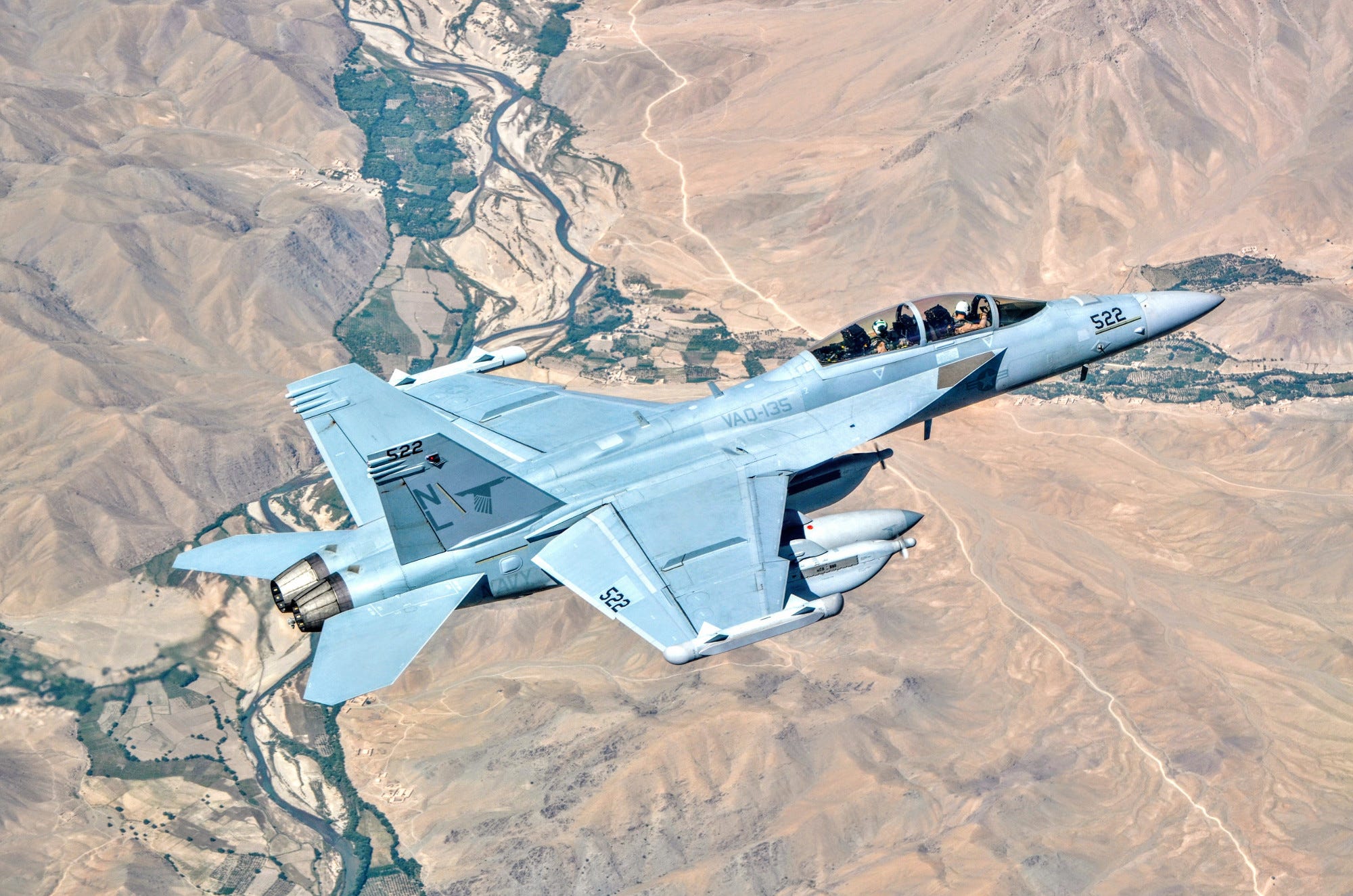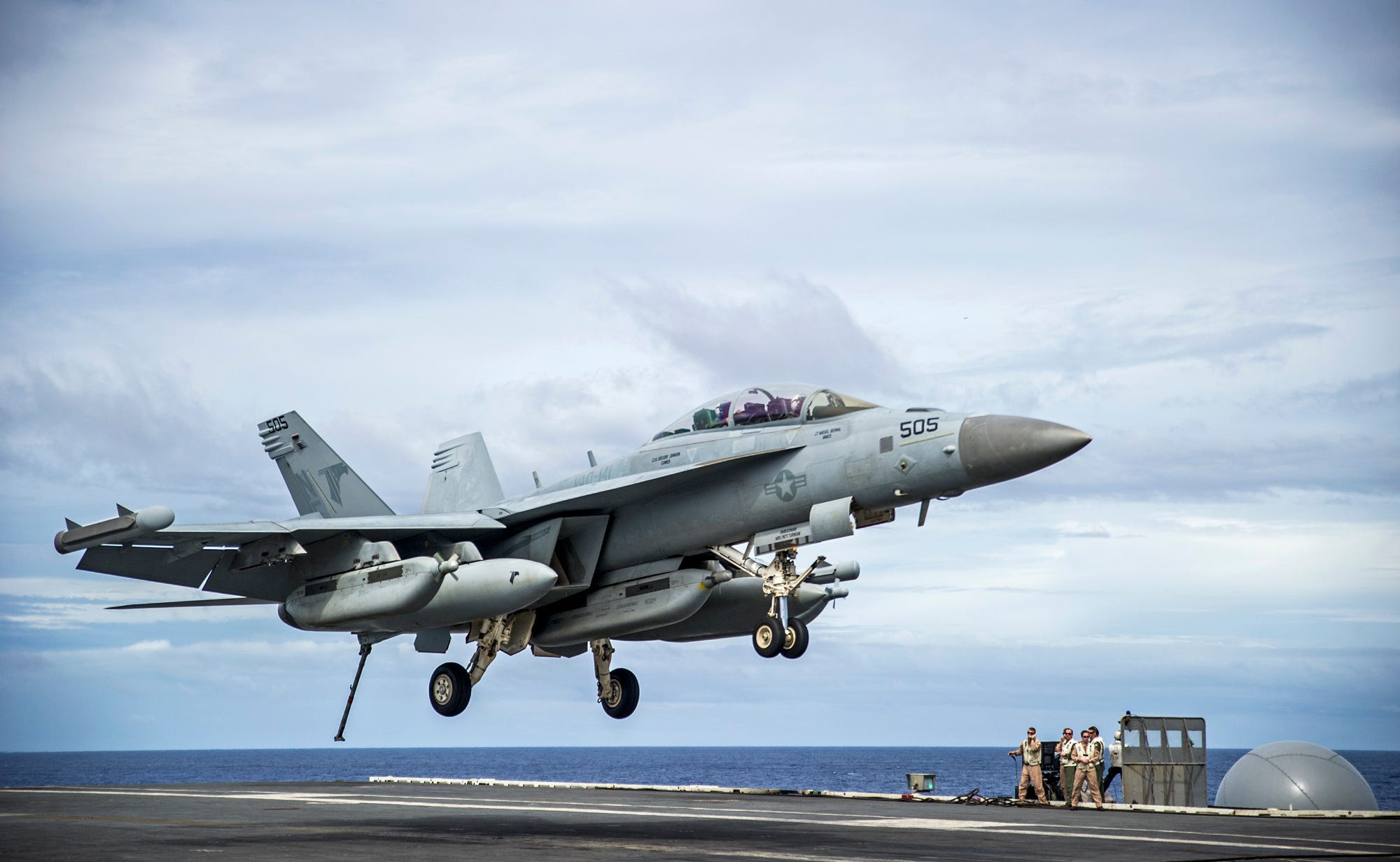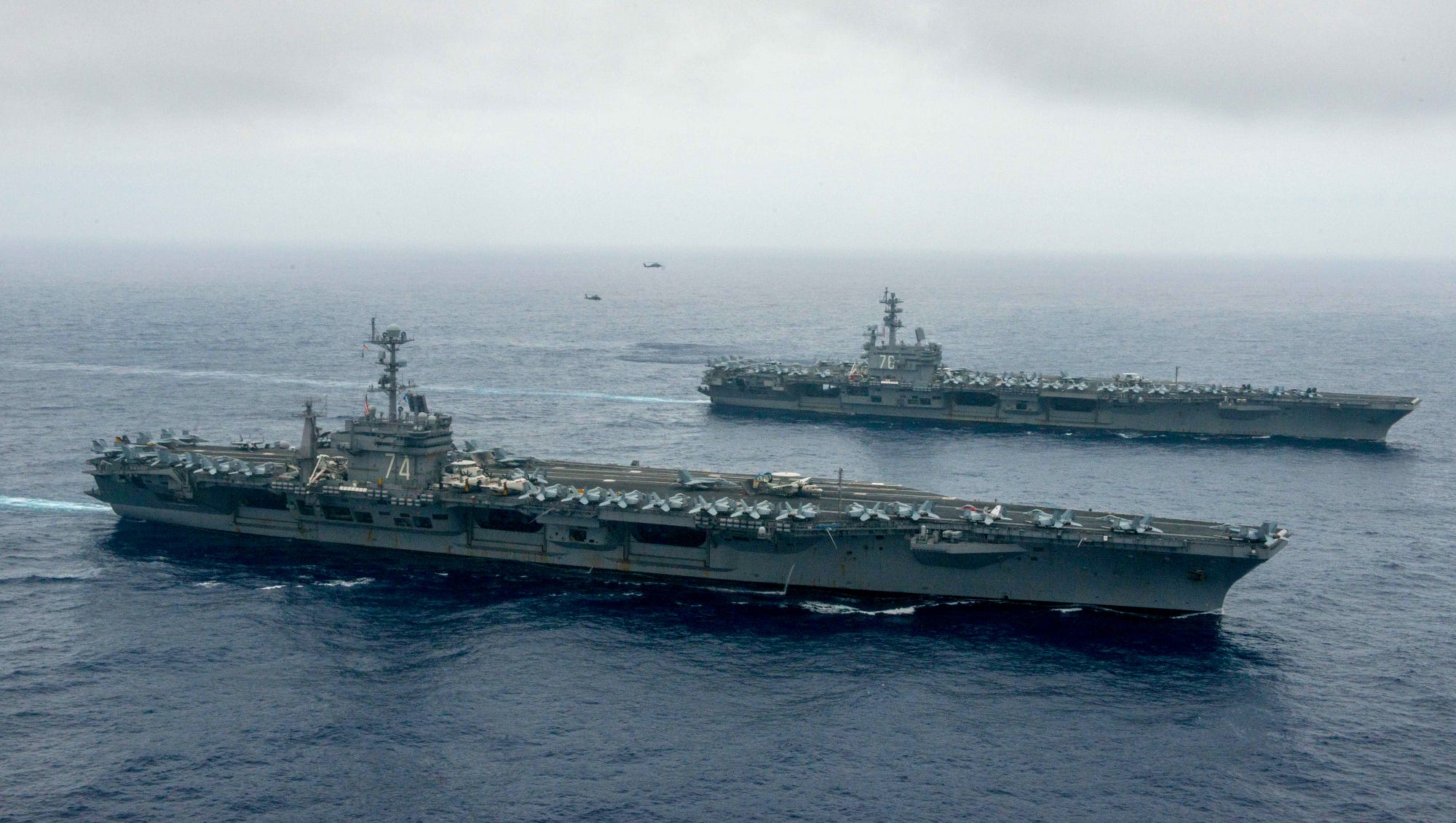by JOSEPH TREVITHICK
As Chinese forces have become increasingly assertive in the South China Sea, the U.S. military has responded by sending more of its own warships and warplanes to the region. Now, U.S. Navy jamming jets are in The Philippines for a training mission that will make a statement to Beijing.
 On June 15, 2016, four EA-18G Growlers from Electronic Attack Squadron 138 — having flown from their base in Washington state by way of Guam — touched down at Clark Air Base. The Americans will train with Philippine Air Force pilots.
On June 15, 2016, four EA-18G Growlers from Electronic Attack Squadron 138 — having flown from their base in Washington state by way of Guam — touched down at Clark Air Base. The Americans will train with Philippine Air Force pilots.
“The temporary deployment … is another example of sending our most capable, advanced units to the Indo-Asia-Pacific on behalf of regional security and stability,” Navy lieutenant Clint Ramsden, a public affairs officer at the U.S. Pacific Fleet headquarters in Hawaii, told War Is Boring via email.
“Our operations are not directed toward any particular nation or military, but are designed to demonstrate our commitment to allies and partners in the Indo-Asia-Pacific,” Ramsden stressed.
Ostensibly, the Navy fliers are at Clark to work with Filipino pilots and their new FA-50PH fighter jets. In November 2015, South Korean plane-maker Korean Aerospace Industries delivered the first two of the new aircraft to Manila’s forces.
Based on the T-50 Golden Eagle trainer, the FA-50 is smaller and lighter than other contemporary fighters such as the F-16 or the F/A-18. After a decade of neglect, the Philippine Air Force is still trying to rebuild and modernize itself.
In 2005, Manila’s air arm retired its last 1960s-vintage F-5 Freedom Fighters. The service had to fall back on an increasingly limited number of Italian-made S-211 trainers — themselves hardly new — to fill the gap. With little money available for regular repairs and spare parts, both sets of planes had become increasingly accident prone.
 At top and above — U.S. Navy EA-18G Growlers. U.S. Navy photos
At top and above — U.S. Navy EA-18G Growlers. U.S. Navy photos
Already happy to have new planes, Philippine crews are no doubt thrilled at the possibility to learn and work with the Navy’s pilots. Ramsden declined to say whether Americans would get any time in the FA-50s or if the Filipino fliers would ride in the EA-18Gs.
But, regardless of these official objectives, Washington has to know the deployment will irk Beijing — and that’s likely an important part of the mission. On April 28, 2014, Washington and Manila cut a military cooperation deal that paved the way for the training.
The agreement “will help strengthen our 65-year-old alliance, and deepen our military-to-military cooperation at a time of great change in the Asia-Pacific,” Secretary of Defense Ashton Carter told reporters during a trip to The Philippines nearly two years later. “And of course, not all of that change is positive.”
“In the South China Sea, China’s actions in particular are causing anxiety and raising regional tensions,” Carter said.
The Navy’s jets are the second in what the Pentagon said will be regular outings to Clark. In April, the U.S. Air Force sent A-10 Warthog ground-attackers, HH-60 rescue helicopters and a specialized MC-130 commando transport to Clark for the first of these training rotations.
The flying branch’s deployment saw American crews patrol around the disputed Scarborough Shoal, situated fewer than 250 miles west of Manila. Beijing was incensed by the flyby, saying it would take “all necessary measures” to protect what it described as its own air space.
“We need to point out that U.S. is promoting the militarization of South China Sea,” the Chinese ministry of defense said in the statement, according to the state-owned People’s Daily. “This threatens the sovereignty and national security of the relevant coastal states, as well as the regional peace and stability.”
The Chinese said they have total sovereignty over this small outcropping, which they call Huangyan Island, and the surrounding waters. Philippine authorities vehemently disagree with this claim.
Unfortunately, The Philippines has had little ability to enforce ownership of the area in the past decade. In an especially embarrassing standoff four years ago, Beijing’s then-unarmed “marine surveillance” ships blocked Manila’s forces — including the Philippine Navy’s flagship BRP Gregorio Del Pilar — from entering the shoal and arresting a number of Chinese fishermen.
 USS ‘John C. Stennis,’ at front, sails with USS ‘Ronald Reagan’ in the Philippine Sea in June 2016. U.S. Navy photo
USS ‘John C. Stennis,’ at front, sails with USS ‘Ronald Reagan’ in the Philippine Sea in June 2016. U.S. Navy photo
A big part of these new Navy-run training sessions will involve practicing techniques for over-water patrols, according to Ramsden. It’s entirely possible the flights will take the EA-18Gs out over Scarborough.
And while they are based on the F/A-18E/F Super Hornet, the Growlers are not an obvious choice for training with friendly fighter pilots. In a shooting war, the jet’s main job would be to help shut down enemy air defenses, not dogfight with enemy planes. Ramsden declined to say whether the Navy considered any other aircraft for the mission.
But September 2015, Chinese pilots have harassed American spy planes in the Pacific on at least three occasions. The Pentagon characterized all of the incidents as “unsafe.”
On top of that, since January China has sped up construction of outposts in various South China Seas hot spots, including a series of man-made islands. The improvements have included space for surface-to-air missiles, radars and airstrips for both fighter jets and bombers.
In November 2013, Beijing announced that it had set up an early-warning zone in the East China Sea and that any foreign planes would have to radio in and follow Chinese instructions during their flights inside the area. Soon afterwards, the Pentagon flew two B-52 bombers through the region.
Earlier in June, the Hong Kong-based South China Morning Post suggested that Chinese authorities may be planning to do the same in the South China Sea, citing unnamed sources close to the People’s Liberation Army.
Over the South China Sea, EA-18s could — if necessary — respond to any Chinese interference by scrambling communications networks or jamming radar screens. Though the A-10s went unmolested in their earlier flights to Scarborough, the ground-attack planes still carried electronic jamming pods on each mission.
Of course, if a serious incident did occur at the moment, the naval aviators would have the added benefit of a massive group of friendly ships nearby. On June 18, the aircraft carriers USS John C. Stennis and USS Ronald Reagan, their two air wings and eight other escorting cruisers and destroyers kicked off a massive war game in the Philippine Sea.
Just like the Growlers in The Philippines, the two carriers are officially on a training mission not aimed at any particular nation. But the Navy says the exercise is focused on a “high-end scenario” against a potential, modern opponent — just like China.
The sailing branch will not say how long Stennis and Reagan will be in the Philippine Sea or when the Growlers are scheduled to leave Clark. But we can be sure the Chinese will be keeping an eye on their activities — and whatever comes next.
No comments:
Post a Comment